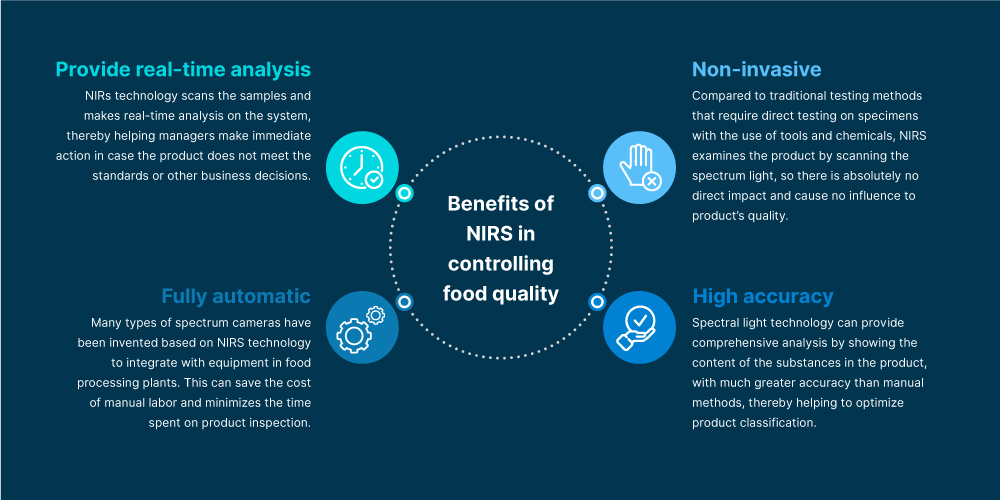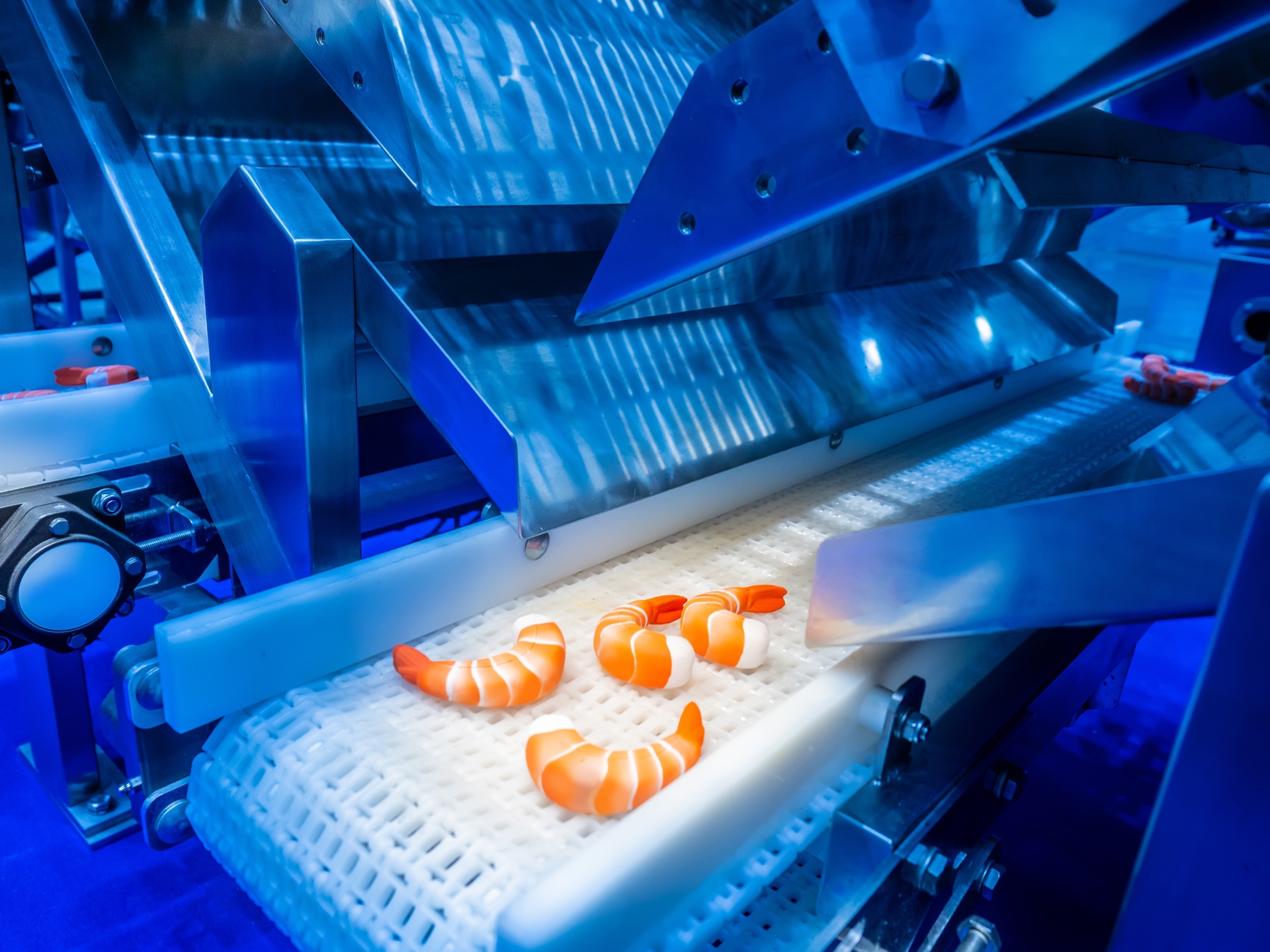The quality of inputs and outputs requires strict and precise controls in the aquaculture industry. Which method to check product quality accurately, quickly and minimize impacts on products?
Control of input/output quality has long been a big problem in the aquaculture industry. Most businesses in this field employ workers to check product quality manually. Workers use their eyes to check the colors, use their hands to test the elasticity and smell the products, thereby classifying products to meet production/processing standards. However, this method does not provide high accuracy, while at the same time, it is not possible to check the content of products as well as time-consuming and costly labor fee
Currently, scientists are studying the use of spectral light for classifying and controlling food quality, especially for fresh foods such as shrimp, fish, etc. This technology is gradually becoming popular and is known as NIRS (Near Infrared Reflectance Spectroscopy).
Operation principles of NIRS
NIRS technology uses spectroscopy to record reflected light from specimens, thereby allowing the exploitation of information that is not visible to human eyes such as the chemical composition of the specimen.
Through a spectral prism, the scientists recorded the change of reflected light from multiple specimens over a specified period of time. They, then, observed and compared the speed and the difference in the color of scattering to determine the content of the sample’s substance. Based on the measured data on each type of specimen, the principles of light scattering to substances are documented.
Currently, NIRS is being studied in combination with Artificial Neural Networks to create a complete system to test and “read” the composition of the sample at the same time.
Benefits of NIRS in controlling food quality

Current applications of NIRS in the fisheries industry
Basic criteria to distinguish between qualified and unqualified fishery products have been studied by scientists on a few types of aquatic products, including: water content, carbon content, nitrogen content, phosphorus content, protein / fat content, amount of preservative, etc.

Currently, NIRS has been researched and successfully used in testing the quality of salmon, cod, halibut, sea bass, etc. For farmed or natural aquatic products, NIRS are both highly accurate. This technology is considered to lay the foundation for future automatic food quality control.
Reference source
(*) Menesatti, P., Costa, C., & Aguzzi, J. 2010. Quality evaluation of fish by hyperspectral imaging





